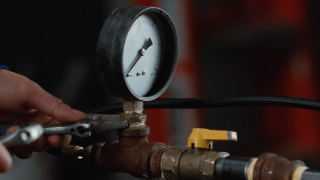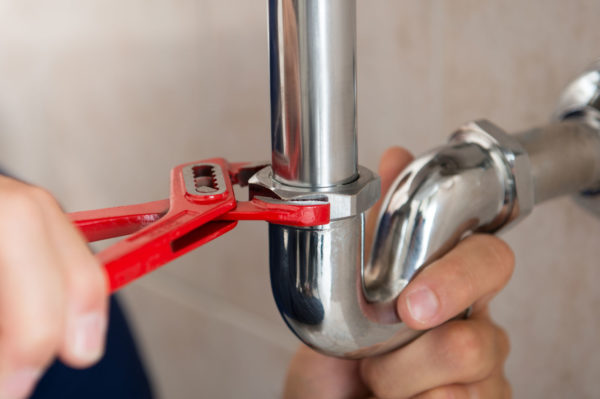Delving into Home Plumbing Basics: A Beginner's Tutorial
Delving into Home Plumbing Basics: A Beginner's Tutorial
Blog Article
Right here further down you can discover additional worthwhile points pertaining to Understanding the Basics of Your Home's Plumbing System.

Plumbing is an important aspect of any kind of home, in charge of providing clean water for drinking, cooking, and bathing, along with removing wastewater securely. Understanding the fundamentals of home plumbing is crucial for every single home owner to ensure proper maintenance, troubleshooting, and, if necessary, repair work. In this newbie's guide, we'll cover the essential ideas of home plumbing to assist you come to be much more acquainted with exactly how it functions.
Water Supply System
The supply of water system brings clean water into your home from a community water source or an exclusive well. It contains a primary water line that attaches to your home's plumbing system, normally situated underground. A water meter measures the amount of water consumed, while a shut-off shutoff enables you to manage the flow of water right into your home.
Plumbing Components
Plumbing components are gadgets that deliver water to various parts of your home and consist of sinks, faucets, commodes, showers, bath tubs, and devices such as dishwashers and washing makers. Each fixture is attached to the water system system via pipelines and installations and might have its shut-off shutoff for maintenance or emergencies.
Water Heater
The water furnace is accountable for heating water for residential use, including bathing, cooking, and cleaning. Usual types of water heaters include tank-type hot water heater, tankless (on-demand) water heaters, and heat pump hot water heater. The water heater is connected to the water system and delivers warm water to plumbing components as required.
Drainage System
The drain system gets rid of wastewater from your home and lugs it away to a sewage therapy center or septic system. It consists of a network of pipelines, installations, and fixtures that move wastewater from plumbing fixtures to the primary drain line or septic tank. Appropriate drainage is important to stop obstructions, back-ups, and sewer leaks.
Ventilation System
The air flow system assists keep correct atmospheric pressure and stop sewer gases from entering your home. Vent pipes, likewise known as vent heaps, extend from plumbing components to the roofing, enabling sewer gases to leave securely outdoors. Air flow pipes additionally permit air to enter the water drainage system, promoting smooth wastewater circulation and stopping suction or vacuum cleaner impacts.
Common Plumbing Devices
Having the right tools handy is crucial for carrying out standard plumbing repair work and maintenance jobs. Common plumbing devices consist of adjustable wrenches, pipe wrenches, pliers, pipeline cutters, hacksaws, plungers, augers (or drain snakes), and Teflon tape. Having these tools readily available can assist you take on minor plumbing problems effectively.
Standard Plumbing Fixings
While some plumbing fixings may need professional support, many typical issues can be resolved with fundamental do it yourself methods. Discovering just how to deal with a leaking tap, unblock a drainpipe, replace a toilet flapper, or fix a leaking showerhead can conserve you time and money on plumbing fixings.
Conclusion
Recognizing the basics of home plumbing is necessary for each home owner to keep a risk-free, practical, and effective plumbing system. By familiarizing on your own with the water supply system, plumbing fixtures, drainage system, air flow system, usual plumbing devices, and standard repair services, you can confidently address minor plumbing problems and guarantee your home's plumbing system runs efficiently.
Plumbing for Beginners: A Comprehensive Guide
If you’re a beginner when it comes to plumbing, don’t worry; you’re not alone. Plumbing may seem intimidating, but with the right knowledge and a little practice, you can handle many common plumbing issues on your own. In this comprehensive guide, we will demystify the world of plumbing for beginners, providing you with the basic knowledge and skills needed to tackle common plumbing problems and even take on some DIY plumbing projects.
The Importance of Basic Plumbing Knowledge for Beginners:
First and foremost, basic plumbing knowledge gives you a solid foundation. It helps you grasp the key concepts and terminology that are essential in this field. By learning the basics, you’ll be able to build upon that knowledge and tackle more complex plumbing tasks in the future.
Having a basic understanding of plumbing also enables you to handle common issues that may arise in your home. Picture this: a leaky faucet or a clogged drain. With some basic plumbing knowledge, you’ll have the confidence to troubleshoot and fix these problems on your own. It saves you from unnecessary expenses and the hassle of waiting for a professional to arrive.
As a beginner, learning the basics of plumbing empowers you to take care of your own home. It gives you a sense of independence and self-reliance. You’ll no longer have to rely solely on professionals for every small issue that pops up. Instead, you can handle many tasks yourself, saving time and money in the process.
Remember, everyone starts as a beginner. Embrace the learning process and take small steps to expand your plumbing knowledge. There are plenty of online resources, tutorials, and even local workshops that talk about plumbing for beginners.
Essential Tools for Plumbing for Beginners
As you start your plumbing journey, having the right tools in your toolbox is crucial. Let’s explore some of the must-have tools:
Adjustable Wrench:
This versatile tool is a staple in any plumber’s toolbox. It allows you to tighten or loosen nuts and bolts of various sizes. Make sure to have an adjustable wrench with a comfortable grip.
Pipe Wrench:
A pipe wrench is specifically designed for gripping and turning pipes. It has serrated jaws that provide a strong grip, making it easier to loosen or tighten threaded pipes and fittings.
Plunger:
The plunger is a simple yet effective tool for clearing clogged drains and toilets. It creates suction when you push and pull, helping to dislodge blockages. Keep a good-quality plunger handy for those unexpected clogs.
Pipe Cutter:
When it comes to cutting pipes, a pipe cutter is your go-to tool. It creates clean, precise cuts without damaging the pipe. Look for a pipe cutter that can handle the pipe sizes you’re working with.
Hacksaw:
A hacksaw is useful for cutting through pipes, screws, and other materials. It’s a versatile tool that can handle different cutting tasks. Remember to use a blade suitable for cutting metal.
Tape Measure:
Accurate measurements are crucial in plumbing. A tape measure allows you to measure pipe lengths, distances, and dimensions accurately. Opt for a sturdy tape measure that extends a good length.
Pliers:
Pliers come in handy for various tasks, such as gripping, bending, and cutting. Slip-joint pliers with adjustable jaws are great for gripping pipes, nuts, and bolts.

Do you like reading about Plumbing basics: How your home plumbing works? Leave a short review directly below. We will be pleased to listen to your views about this blog. Hoping to see you back again later on. Make sure you set aside a second to distribute this blog entry if you enjoyed reading it. I value reading our article about Understanding the Basics of Your Home's Plumbing System.
Maintenance Sign-Up Report this page